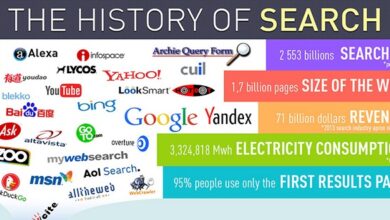Recognizing and Reading Search Results

Reading the Search Engine Results Page
Say that Mother’s Day is coming up and you want to buy your mother a nice bouquet of roses. (Good for you! No wonder Mom always liked you best.) After going to Google and typing your [bouquets] search query into the box, you’re presented with a results page. The results page contains many different listings containing the keyword, or search word, [bouquets], sorted according to what Google thinks is most relevant to you.
Understanding How People Look at Search Results
Knowing what is on the results page is important, but so is understanding how people read it. As it turns out, there is actually a predictable pattern in the way people read a results page. Eye‐tracking studies show that, just as Google’s SERP has changed a lot over the past decade, people’s behavior when viewing results has similarly evolved.
Times have changed, and so has the way users view search engine results. After acquiring Enquiro, the company Mediative followed up the research with a new eye‐tracking study in September 2014. It found that a searcher’s gaze often travels outside the Golden Triangle area looking for what seems most relevant. Because Google’s SERP format can be different with every search, it’s no wonder people have learned to scan a greater portion of the page to find what they need.
Identifying Mobile Users’ Search Patterns
At the start of 2014, it finally happened: Internet use via mobile devices actually exceeded desktop Internet usage in the U.S. for the first time. Face it, everyone has a smartphone these days, and people are increasingly using those handy devices, tablets like the iPad and the new midsize range of phablets (oversized phone‐tablet devices) to go online.
Website owners need to take this trend seriously. If your website is not mobile‐ friendly, you’re probably already losing business, or turning off potential customers. People are not as forgiving as they once were with a slow‐loading page or a site that doesn’t resize well on a small screen. If that’s a concern, you can find lots of help optimizing your site for mobile users over in Book IV, Chapter 3. But here, we look at how users view search on a mobile device.
Mobile SERP features
Mobile devices range from smartphones to tablets, with many different sizes of screens. Because the viewing area on a mobile device is usually much smaller than a desktop computer screen, users have gotten used to scrolling quickly to see more. Sometimes not much shows in the initial view.
Mobile’s impact on ranking
It turns out that searcher behavior is a lot different on a mobile device, and this difference puts ranking positions in a slightly new light. A very interesting study by secularity looked at click‐through rates (the percentage of time a user clicks on a listing) on desktop versus mobile SERPs. The study tracked clicks over a three‐month period (June–August 2014), a period that avoids much seasonal fluctuation.
Blended results
The term blended results (dubbed Universal search by Google) refers to the integration of results from many different verticals into a SERP. Google started this trend years ago, and now all the major engines blend together different types of results. The intent of this blending is to increase the chance that the results will satisfy the user’s needs.
Last word
Not surprisingly, Google’s version of voice‐assisted search is currently way out in front of the pack. (See the sidebar “Meet the voice assistants” for details.) Because Google has access to data not only from search, but also from other Google properties, including YouTube, Google Drive, Gmail, Google+, and more, it’s likely to continue setting the standard in semantic search




